Personal Growth in Santa Fe with Zero Donkey Balls: A Miracle Story
I’m sure you’re familiar with the old adage, “One hundred percent of personal growth is derived from life lessons and experiences that suck donkey balls.”
Never heard that one? Perhaps I made it up. Regardless of its origins, it’s stone cold fact. You don’t become a better, more empathetic human until you’ve personally survived enough shitastrophes to understand another’s pain. You don’t become more comfortable in your own skin until you’ve tried to crawl out of it and run screaming into the night. I’ve been a lifelong believer in the ‘life lessons suck donkey balls’ philosophy — until last week.
Last week I went on a four-day trip to Santa Fe with a small group of total strangers arranged by a women’s-only travel organization called NextTribe. That sentence is full of things that would normally make me hide under a blanket fort with a pint of soothing Ben & Jerry’s Phish Food and a nice distracting book. Let’s dissect it:
It starts with “I” instead of “we.” No support Hubby, not even at my destination after a solo flight, on a teeny plane. That’s a first for me; I have only ever flown alone in order to meet up with him wherever he is working.
“Four days.” Waaaay too long to successfully fake having my shit together.
It includes the words “Santa Fe” — an agoraphobic’s worst wide open desert nightmare.
In concludes with “a group of total strangers — all women.” If you need further explanation for that one, I’m guessing you’re new here.
But here’s the thing: Not only did it not suck donkey balls, it was actually wonderful. Yes, I had to do some EFT tapping on the plane, along with a few breathing exercises, and more than once I had to shut my eyes against the alleged ‘gorgeous’ desert landscape stretching out endlessly around us as we drove through it. (Deathly dry and vegetation-free is not gorgeous to me). But these fearful moments were brief and my coping mechanisms coped. Somewhere along the way, I realized I didn’t need to fake having my shit together at all, let alone four consecutive days, and best of all, the strangers didn’t stay strangers for very long.
It was a trip full to the brim with fun and learning. I was learning about my fellow travelers, about Santa Fe history, about pueblos and traditions of native peoples, about Georgia O’Keeffe and other local artists, and surprisingly, I found that taking in new information sparks curiosity, And curiosity calms me the fuck down because it leaves no room in my brain for judgement or criticism — not even of myself. It’s like Ted Lasso taught us, you can’t be curious and judgmental at the same time. Okay, he stole it from Walt Whitman but I heard it from Ted first.
That’s a pretty helpful life lesson to learn with virtually no sucking of donkey balls.
What I Learned About Santa Fe and My New Friends
That was really the end of this post but if you’re curious about what I learned in Santa Fe, keep reading.
We were a very diverse group of white women out there in the desert — all over 45, all from different backgrounds, occupations, home states and economic means, with wildly different life stories and aspirations for our next chapters.
We consisted of Marcy — a former art teacher turned professional nomad; Lisa — a middle school teacher who actually loves middle school humans; Teresa — an award-winning writer/writing teacher; Vicki — a payroll specialist; Irene — a woman with six graduate degrees (including a recent law degree) who is “just trying to stay useful and employed” at Apple, where she spearheaded Apple Wallet and all of its security/privacy innovations; and Martha — a retired landscape architect and our positivity champion who refused to let us sink into dark places when politics or the complications of today’s society came up. Incidentally, her name is considered a curse word in our home because it was Hubby’s wretched mother’s name and we do not speak it aloud. I had a hard time calling my new friend “Martha” because it felt like I was spitting on her.
Pueblos and Hornos
Led by Marcy, who served as our NextTribe travel coordinator, we visited a pueblo where we were welcomed by Norma and her family into their home for a cooking class. We sat around her huge dining table making empanadas and tamales, which were baked in one of the two traditional hornos that were built and operated by her husband and nephew. We met her sister, Toma, who was the relentless driving force behind restoring the Ohkay Owinge pueblo. As head of the Ohkay Owinge Housing Authority, she raised over $16 million to focus on the restoration of traditional housing, the rejuvenation of the community and cultural preservation efforts. We got to watch SEEDoc’s impressive, 15-minute mini-documentary about the project in the family’s living room as we drank tea and heard the behind-the-scenes tea.
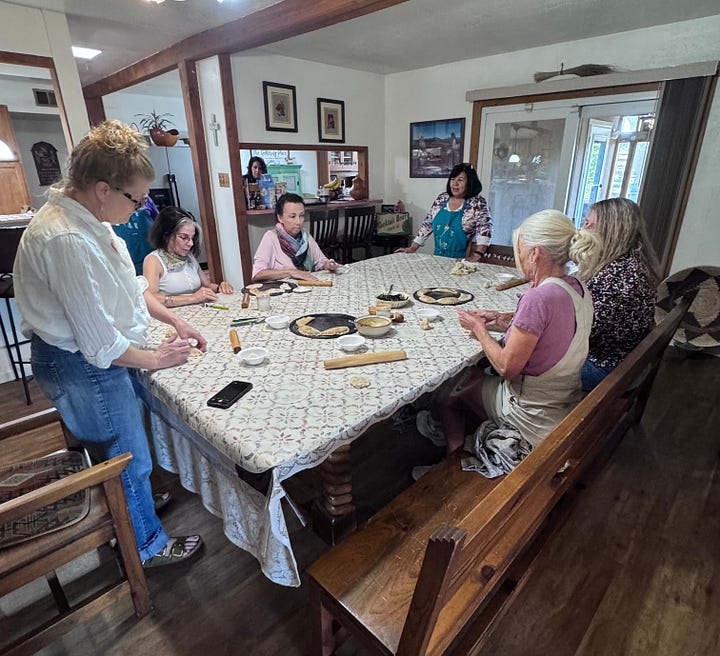
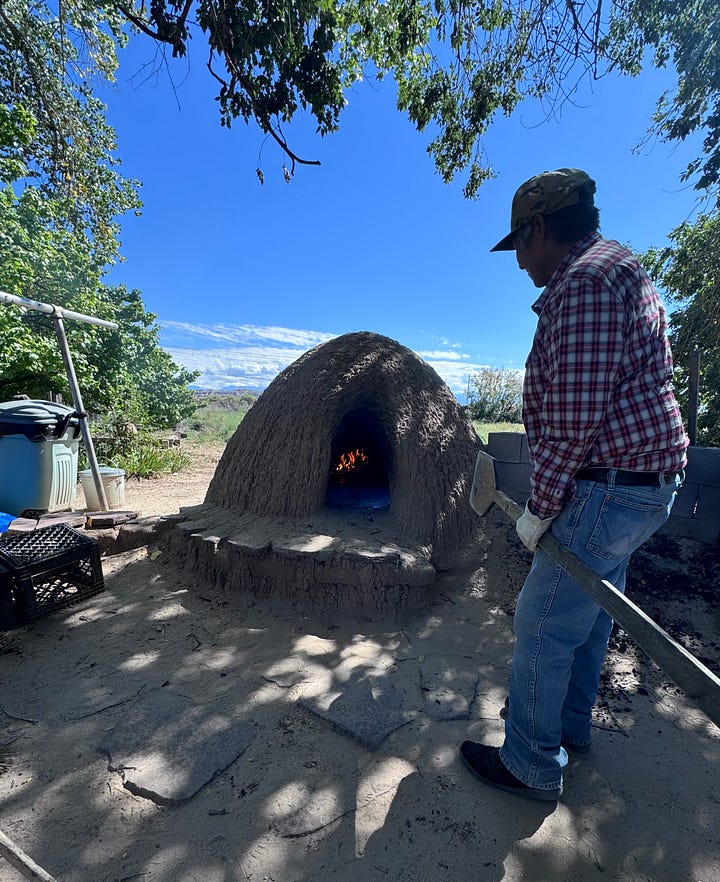
Georgia O’Keeffe was more than giant coochie flowers
From there we moved on to a deep dive of Georgia O’Keeffe who it turns out, was a complete badass, starting her life over in the desert at age 61. All I knew prior to this was the coochie flowers that she swears were not coochies. But those were her early works. The bulk of her art was New Mexico landscapes at Ghost Ranch and surrounding areas. We stood at her most famous painting sites on Ghost Ranch, comparing prints of her work with the real-life landscape before us. We toured her home in Abiquiú — it took her 10 years to convince the Catholic church to let her buy the hacienda ruins from them, then another three years to have it painstakingly restored by another badass woman, Maria Chabot. Marie Chabot was a time traveler - simultaneously ahead of her time, deeply linked to the traditions of the past and yet still grounded in the present. Restoring the home meant simultaneously restoring the entire community of Abiquiú but it was a passion project for O’Keeffe because she wanted to grow her own food — to know exactly where all her food was coming from and have control of the the quality of the soil as recommended by nutritionist Adelle Davis, yet another badass woman far ahead of her time.
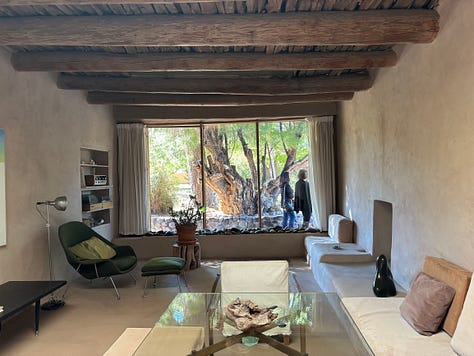
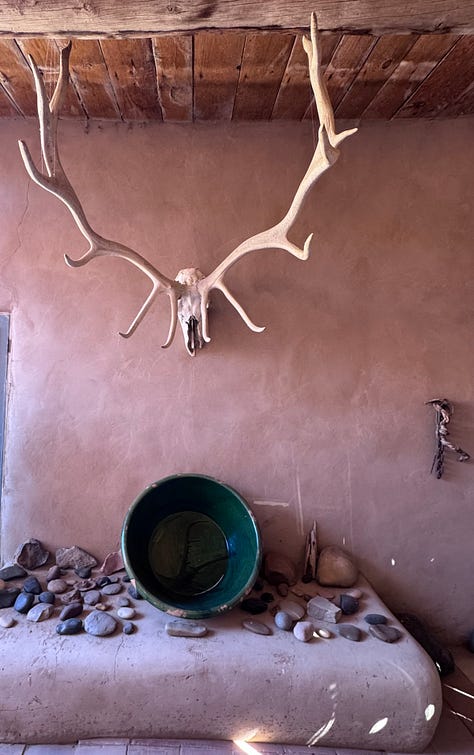
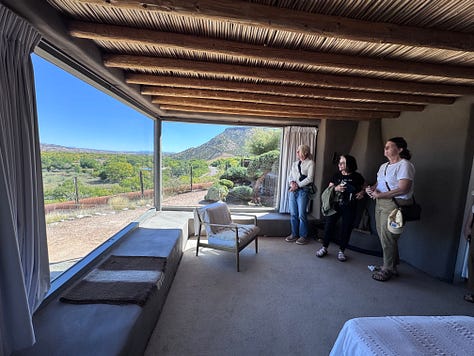
My spirit artist
Later, we toured another artist’s studio, a living artist this time — Alexandra Eldridge. Coincidentally, I had been blown away by her work when I saw it a week earlier at Boulder’s Smith Klein gallery — she had just begun exhibiting there two weeks prior. She told us stories of her magical life and how her art came to be and I absolutely fell in love. I love her art and I love the way she sees and thinks about the world and I want to be her when/if I grow up. As I left, I gave her my card and told her to call me next time she’s in Boulder because, as I vehemently insisted, “we are going to be friends.” I declared that in a tone that may have come off a little stalkery, but she said she would come find me. I hope she does.
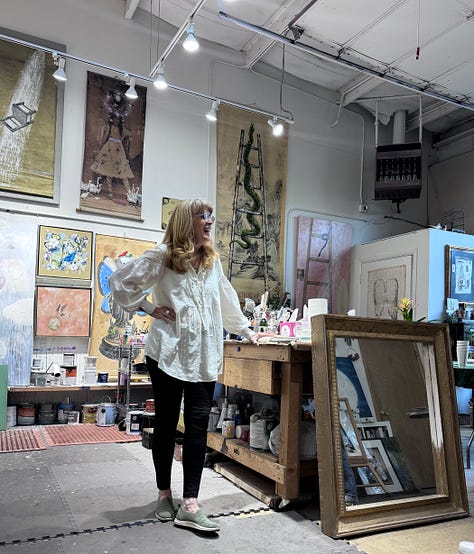
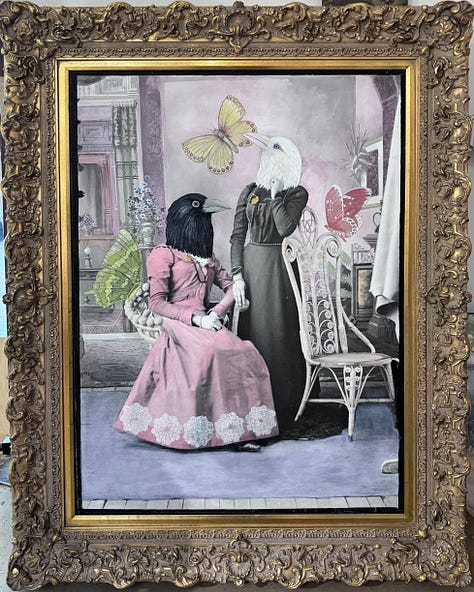
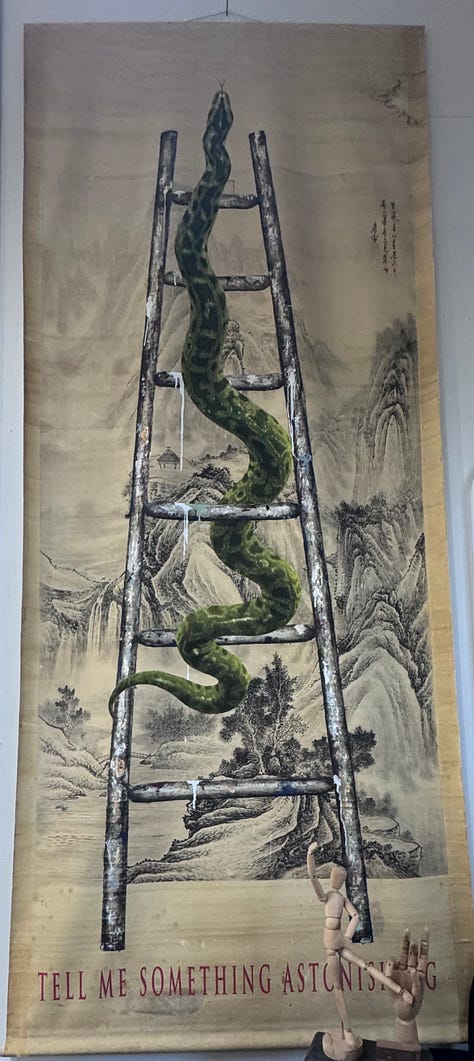
The Miraculous Stairway
Say what you want about religion, the Catholics have fucking STYLE. I mean, look at the robes, the sculptures and stained glass, the architecture. Some of the most beautiful works of art on the planet were created for churches, especially the Catholic ones. In Santa Fe, there is an exquisite little example of this called the Loretto Chapel, and in the heart of the chapel is a spiral staircase surrounded by mystery.
The legend goes like this: Seven nuns from the Sisters of Loretto answered the call sent out by Santa Fe’s first bishop, Jean Baptiste Lamy, to found a local school for girls. First, the sisters had to learn to speak Spanish and then endure a treacherous journey from Kentucky, during which their Mother Superior died. They finally arrived in Santa Fe and opened their school in 1853. A few years later, they were able to begin construction of their chapel. Unfortunately, the architect died before building an access to the choir loft. The loft was too high and the chapel too small to accommodate a normal staircase — it would have taken up too much floor space, and severely reduced the seating capacity. What to do? Why, pray on it of course.
The sisters petitioned a novena (a nine-day prayer) to St. Joseph, the Patron Saint of Carpenters, for a solution. On the ninth and final day of the novena, a man arrived on a donkey, carrying basic carpentry tools and asked if he could help them. Umm… yes.
What he proceeded to create was more art than architecture. It is a 20-foot spiral staircase with two complete 360-degree turns and no central support system. No nails or glue were used; it is held together solely by wood. The carpenter only used very simple hand tools and a bowl of hot water for bending the wood. It defied all conventional architectural practices. Architects marvel at this structure and claim it would be a difficult feat to create, even today with modern tools and resources.
When the staircase was completed, the carpenter just disappeared, without receiving payment or claiming any credit for his work. The sisters and local townspeople searched for years because they wanted to thank him, but he was never seen or heard from again. The wood that was used in the stairway was spruce — a tree not native to New Mexico. In fact, the particular variety of spruce that was used has not been scientifically identified anywhere else in the world. Did you just get chills?
And this concludes the “What Xan Learned" portion of the Santa Fe tour.
Now, please enjoy this delightful slide show of a couple (dozen) more paintings and sculptures and architecture that caught my eye:
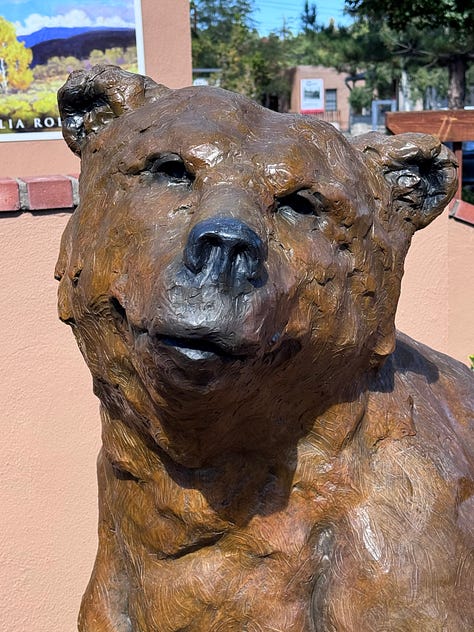
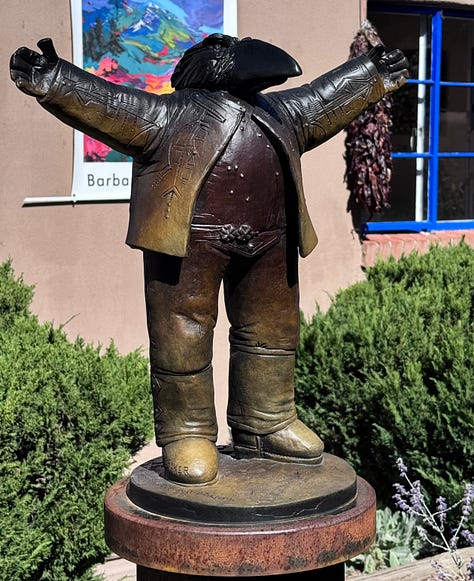
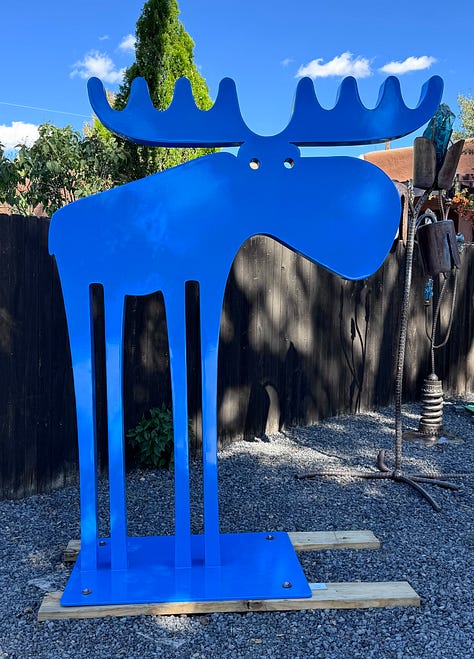
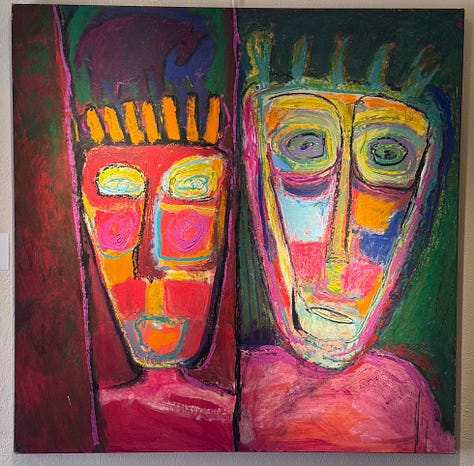
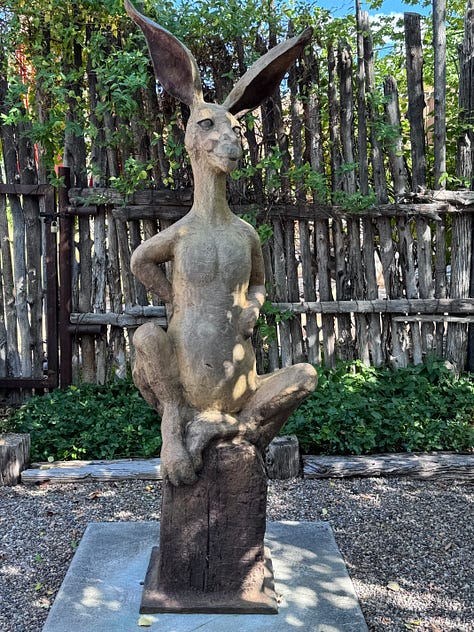
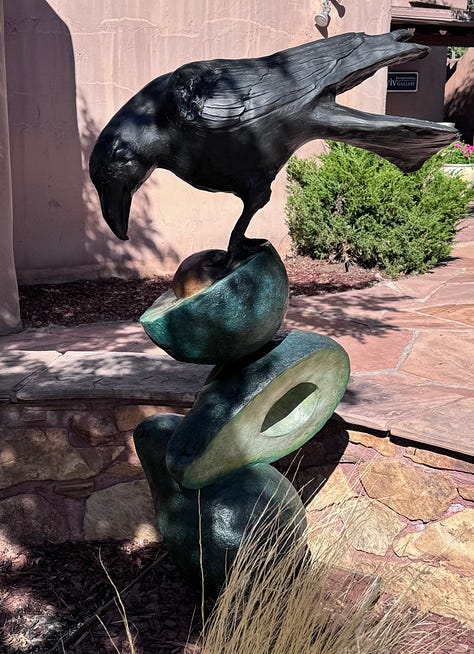
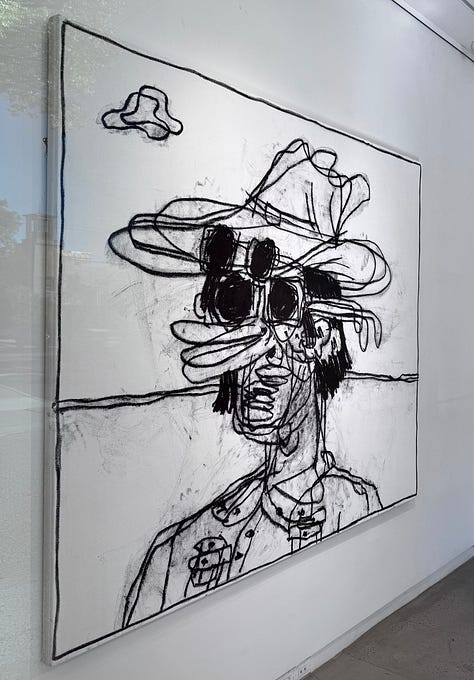
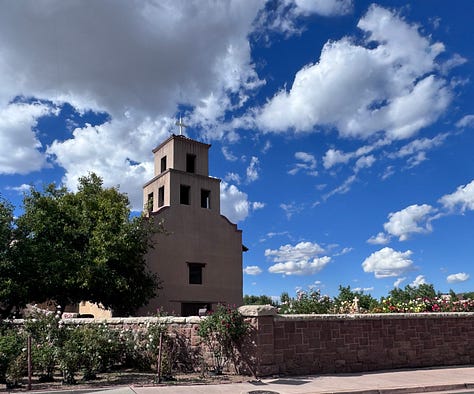
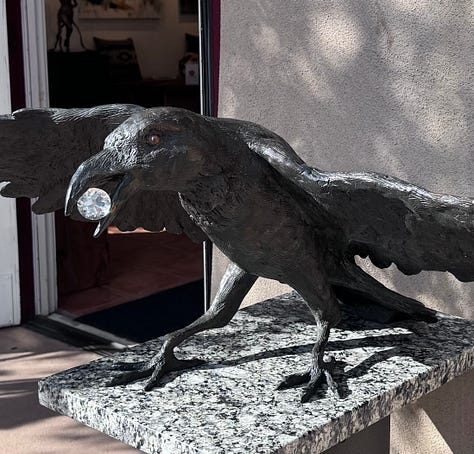



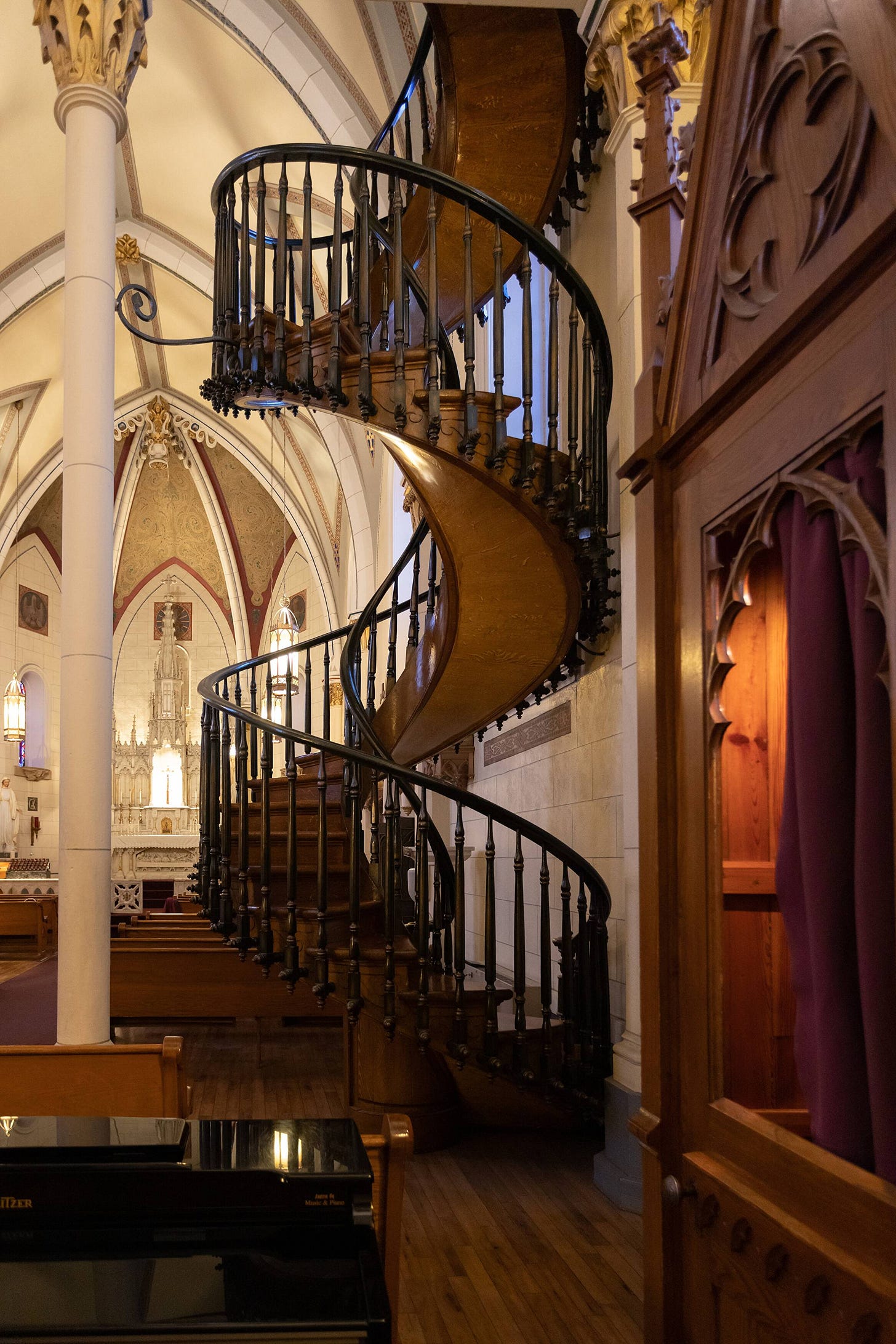
Looks like an amazing trip. I’m impressed with your adventurous solo trip( sans hubby). How wonderful to bond with a group of women while traveling.
I’m also going to check out this artist. Love her work and hope you do become friends!
Thank you so much for including me in your wonderful writings! Yes, we will be friends!
I love your spirit! Can't wait to see you again in person!! xoxo